{Click on an image to enlarge, then use the back button to return to this page}
This page last updated on 04/20/2019
 |
| (Fig. 01) |
 |
| (Fig. 02) |
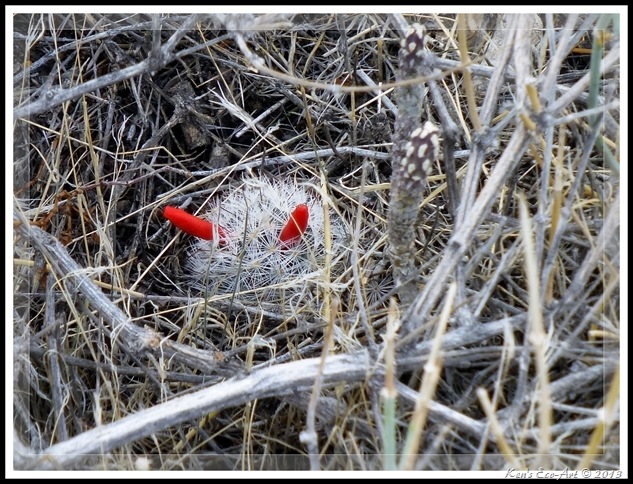 |
| (Fig. 03) |
|
Picture Notes: On 04/16/2019 while hiking along Rockefeller Road near the Irebetba Peaks we found several instances of these Desert Spinystar cacti growing directly out of the surrounding rock (Figs. 01 & 02). They are either a Desert Spinystar or one of the more than 171 known species of the Pincushion (Cactaceae Mammillaria). I’m still not 100% sure of the identification. This is only the third time I have had sightings of these relatively rare cacti. On 11/08/2012, one of my fellow hiking partners spotted this nearly hidden cactus (Fig. 03) while hiking to the abandoned Whale Mine off of Sandy Valley Road. The view in (Fig. 04) gives you a better idea of its size and how hard it can be to sometimes spot these small little cactus. In February 2013, I found a relatively large cluster of these (Figs. 05-07) while hiking around the 99 mine site on the west side of Cottonwood Valley.
|
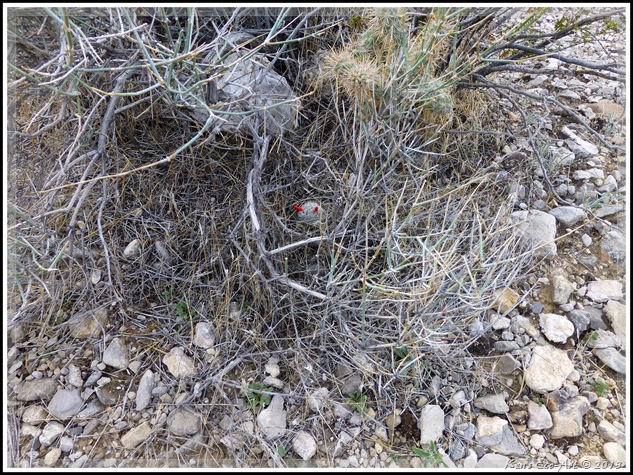 |
| (Fig. 04) |
|
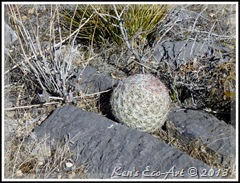 |
| (Fig. 05) |
|
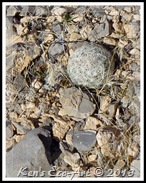 |
| (Fig. 06) |
|
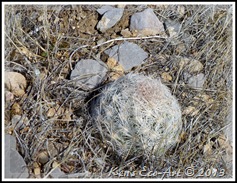 |
| (Fig. 07) |
|
Description: The Fishhook Cactus (Mammillaria tetrancistra). It is native to the Mojave and Sonoran Deserts of northern Mexico and the southwestern United States, where it grows in a variety of desert habitat types. This cactus generally has a single cylindrical stem a few centimeters wide and up to about 25 centimeters tall. Each cluster of spines is made up of 3 or 4 dark, hooked central spines and many straight, white radial spines, the longest reaching 2. 5 centimeters in length. The flower is 2 to 4 centimeters wide and pink to lavender in color. The fruit is red, shiny, and fleshy and contains many black seeds coated in corky arils. This cactus generally has a single cylindrical stem a few centimeters wide and up to about 25 centimeters tall. Each cluster of spines is made up of 3 or 4 dark, hooked central spines and many straight, white radial spines, the longest reaching 2. 5 centimeters in length. The flower is 2 to 4 centimeters wide and pink to lavender in color. The fruit is red, shiny, and fleshy and contains many black seeds coated in corky arils.
Escobaria vivipara is a species of cactus known by several common names, including spinystar, viviparous foxtail cactus, pincushion cactus and ball cactus. It is a small, round cactus that grows to about 6 inches tall by 3-inches wide (though it is usually 3 by 2 or smaller), often remaining oblong or spherical. The stem does not have the ribs (flutes) seen in some other cactus. Its short, usually solitary, rounded stem emerges from the ground un-branched. It is densely covered in a mat of star-shaped arrays of straight white spines .4 to .9 inches long (none are fish-hook shaped), with all of the spines pressed closely against the stem. The club-shaped red fruits are 10 to 20 millimeters long and contain little brown, rough seeds. They tend to grow in non calcareous dry granite-based soil but can also grow in rocky habitats, either in rock fissures or directly on top of the rock surface even without the presence of soil. Thus, the mineral composition of the rocks in their habitat directly influence their abundance.
They like Limestone soils and can be found on rocky limestone outcrops and along limestone ridges at elevations between 3,300 to 8,000 feet from southeastern California, southern Nevada, Southwest Utah, to northwest Arizona. Living in dry gravely areas, usually below 4,500 feet, it blooms between April and May. This species is difficult to find because they are small and occur infrequently, however, they tend to grow in small groups, so if you find one, look around for more.
The water source for these cactus is mainly rainfall, and when there is a lot of rain, its blossoms are especially beautiful. In order to survive in the harsh Mojave and Sonoran deserts, it hangs onto its water by having spines instead of leaves. This slows evaporation. The spines are often translucent white, and they completely hide the surface of the plant. It would be hard for the animals to eat one since it is covered in spines.
|







